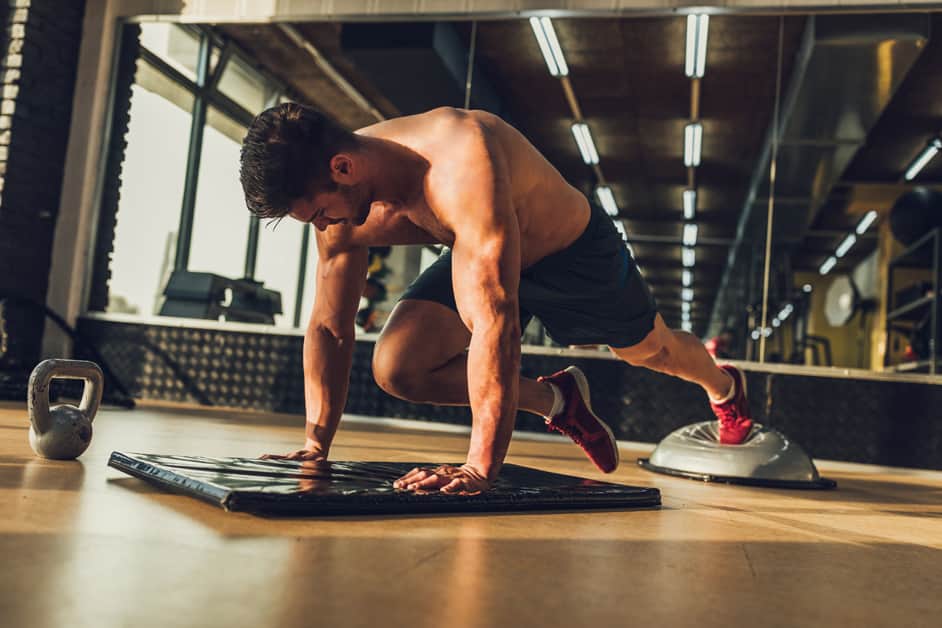Introduction
Living with chronic knee pain can be tough. But simple balance exercises can help. They increase strength and flexibility around the knee joint, reducing pain. Add a few of these exercises to your home routine. They’re designed for all skill levels.
Before trying any of them, talk to your doctor or physical therapist. Make sure the exercises are safe for you. Also, use proper form to avoid injuring yourself more.
Benefits of Balance Exercises
Balance exercises are perfect for strengthening and protecting the knee joint. They help stabilize the muscles and improve mobility. Practicing them on a regular basis protects the knee from injury, relieves pain, and increases coordination.
Balance exercises are essential for people with knee pain. They restore muscle function in the legs. Also, they help those with balance deficits due to aging or neurological conditions.
You can do balance exercises almost anywhere. At home, outdoors, or while seated. Training helps you stay aware of body positioning and shift faster into better alignment. This improves your ability to remain balanced while standing or doing daily activities.
Simple balance moves include:
- Standing leg swings
- Single-leg stands
- One-legged squats
- Weight shifting
- Lunges
- Side step ups onto a step.
With consistent practice, these moves become easier and more comfortable! Doing them helps people with knee pain to do activities without risking injury.
Types of Balance Exercises
Balance exercises are a must to ease knee pain and avoid falls. Improving your balance helps strengthen the muscles of your hips, legs, and ankles.
There are a few kinds of balance exercises that can be done at home. Standing, walking, and dynamic balance exercises are some examples. Let’s explore these types of exercises and how they help reduce knee pain:
Single-Leg Balance
Single-leg balance is a great way to perfect your balance. It strengthens your lower body too. You can modify it to focus on your knee and other areas.
- Stand with feet parallel and hip-width apart.
- Keep your abs tight.
- Shift your weight onto one foot.
- Tilt towards the supporting leg side.
- Hold it for 30 seconds. Work up to 1 minute.
- Tap into your engaged muscles while balancing.
- Keep your knees tracking over your toes.
- Maintain good posture during the hold.
- Do 1-3 sets of 30 seconds each or until you’re tired.
- Repeat on both sides.
Heel-Toe Balance
Heel-Toe Balance, also known as Standing Tightrope Balance, is an effective exercise for those with knee pain. No equipment is needed and it can be done anywhere. Stand close to a wall or railing for balance, if needed.
Place feet together and brush heel of one foot along toe of other to create a straight line. Start with eyes open, then close them as balance improves. Hold for 10 seconds while actively pressing toes into floor. Once mastered, try it on a soft surface like a pillow or yoga block on the floor. If feeling unstable or off-balance, return to an easier level.
Heel-Toe Balancing helps activate core muscles to stabilize joints and reduce joint strain and pain.
Side-Stepping
Side-stepping, also known as clock stepping or lateral shuffling, is a great balance exercise to try at home! It strengthens the muscles in your legs and improves your balance. You can do it with both feet together, or one foot following the other.
Start by standing with your feet together and your hands on your hips. You can close your eyes to make it harder. Step one foot out laterally away from you, then return it back. Move slowly like a clockwise pattern – each step is like an hour of a 12 hour clock face. Rest for 2 minutes, and do this 5 times.
For extra stability, stand next to a wall and hold onto it for support, then release and try without the wall for a bigger challenge.
Squats
Walking and other daily activities can put strain on the knee joints, leading to knee pain. Squats are a great way to help! Do them regularly and the proper way, and it can stop knee pain from happening.
The squats aim to make the muscles in your thighs and buttocks strong. To do them right:
- Stand with feet shoulder-width apart, toes pointing out, and arms forward for balance.
- Bend the hips and knees like you’re sitting in a chair. The knees should stay in line with the toes.
- Push back up through the heels.
Do 10 reps for 3 sets per day for best results.
Tips for Balance Exercises
Balance exercises can help those with knee pain. They improve coordination, stability, and lessen the pain. You can do them in your own home.
Here are tips to get the most out of your balance exercises. Make sure you get the desired effects!
- Bend your knees slightly while standing and keep your feet hip-width apart.
- Keep your eyes focused on a single point in front of you to help with balance.
- Slowly move your arms in different directions to challenge your balance.
- Hold your balance for 10-30 seconds and repeat 3-4 times.
Start Slowly
When starting a balance exercise program, go slow and progress gradually. Balance exercises are meant to help strengthen the muscles that keep the joints stable. Find a clear area with no distractions, and do the exercises in any order. Pay attention to your posture.
- Sit or stand without any help or support.
- As your balance improves, make a routine of strength training exercises. Calf raises are a good start; do them slowly and carefully.
As your ability to stay in good posture and control your movements grows, your confidence in balancing will too. Try more complex exercises such as heel-raises, toe-raises and hopping. But go slow, for safety first.
Use a Chair for Support
Balance exercises are great for those with knee pain and for those wanting to increase mobility, strength, and stability. It is about keeping the body’s center of mass over its base of support. To reduce injury risk and maximize safety, use a chair for support.
- Make sure the chair is stable and firmly fastened.
- Armrests provide better support, so try to use a chair with them.
- When standing, push off the armrests to maintain balance during the exercise.
Try resistance band exercises against an anchored object or use light hand-held weights (1-3 lbs). Use body weight as resistance. Move up and down without moving away from center, like stair steps, not leapfrogging. This isolates muscle groups and promotes knee stabilization without compromising safety. It can help lessen knee pain and enable longer-term gains.
Focus on Form
When doing balance exercises, focus on proper form. Stand tall, feet shoulder-width apart, chest up. Spine should be neutral, don’t strain! Move slowly and with control, not rushed. Exercises shouldn’t stress your joints; reduce intensity or stop if necessary.
If possible, practice in front of mirror. Check yourself and make adjustments when needed.
Conclusion
Knee pain is a chronic issue. It’s best to discuss with a doctor or physical therapist for the best treatments. Strengthening and balance exercises can be effective. Before starting any type of exercise, it’s important to check with a healthcare professional.
Light-moderate exercises are beneficial, but don’t overdo it. Taking care now will help you avoid issues later.
Frequently Asked Questions
Q1: What are some simple balance exercises to do at home for knee pain?
A1: Some simple balance exercises that can be done at home for knee pain sufferers are heel raises, single-leg stands, and side-lying leg lifts. Heel raises involve standing on one foot and raising the other heel off the floor as high as possible. Single-leg stands involve standing on one foot with the other foot off the ground and the hands held out for balance. Side-lying leg lifts involve lifting the top leg off the floor while lying on the side.
Q2: How frequently should balance exercises for knee pain be done?
A2: Balance exercises for knee pain should be done for 10 minutes 3 times a week. It is important to start with shorter sessions and gradually increase the duration and intensity of the exercises as the body becomes stronger.
Q3: How can balance exercises help with knee pain?
A3: Balance exercises can help with knee pain by strengthening the muscles and tendons around the knee joint, increasing stability and reducing stress. This can help to reduce pain and improve mobility.





